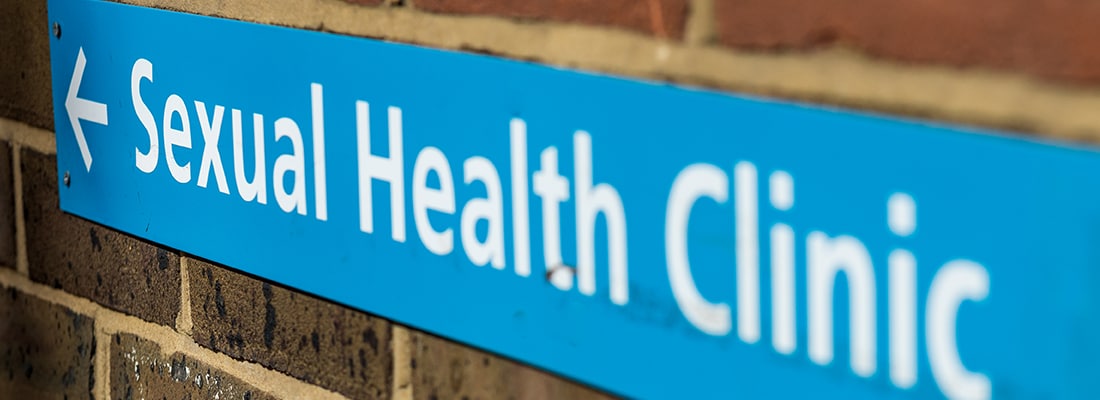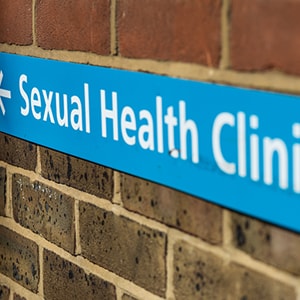General Resources

Sexual health is an essential piece of overall health. People who have vaginal, anal, or oral sex can get an STI, which is why knowledge about these infections and how to prevent them is important. This list of resources has information on STIs, STI testing, and how to protect yourself and your partner(s).
CDC Fact Sheets – Available in disease-specific versions; basic fact sheets answer common questions about STIs and many are offered in English and Spanish.
CDC Prevention Page – Information about STI prevention, testing, and resources.
Condom Dos & Don’ts – A condom fact sheet that also provides information about dual protection for pregnancy prevention.
The Right Way to Use an External Condom – An illustrated page demonstrating the correct way to put on and take off a male (external) condom.
The Right Way to Use an Internal Condom – An illustrated page demonstrating the correct way to insert and remove a female (internal) condom.
How to Use a Dental Dam as a Barrier for Oral Sex – An illustrated page demonstrating how to use a dental dam, as well as a list of dos and don’ts and how to make a dental dam from a condom.
GetTested – A national STI, HIV, and hepatitis testing locator to find nearby free or low-cost testing.
The Lowdown on How to Prevent STDs – An infographic that provides readers with basic information about prevention in an easy-to-read format.
Five Action Steps to Good Sexual Health – A practical roadmap to good sexual health, including tips and advice, real-life scenarios, conversation starters and more.
HIV Risk Reduction Tool – Use this tool to access tailored information about your risk of getting or transmitting HIV, and how you can reduce your risk.

Are you ready to talk to your doctor about your sexual health? Planning to get tested for STIs? These resources can help anyone who is having sex (or thinking about having sex) choose a doctor, find a testing location, and prepare for your visit. There is also information on what to expect after getting tested.
Choosing a Doctor: Quick Tips – Tips from how to find the right healthcare provider from healthfinder.gov.
Which STI Tests Should I Get? A brief overview of STI testing recommendations.
GetTested – A national STI, HIV, and hepatitis testing locator to find nearby free or low-cost testing.
How do I prepare for a visit to my healthcare provider? – Some tips on what to expect from your visit and how to bring up sexual health with your doctor.
How to Talk to a Doctor about STI Testing – Tips on how to discuss your sexual health with your doctor.
Just Diagnosed? – A fact sheet providing the three steps a person can take if they were recently diagnosed with gonorrhea or chlamydia, including resources to help them talk to their partner.
Take Charge of Your Sexual Health – A guide for individuals focusing on the clinical services that can help protect and improve sexual health. It explains recommended tests (aka screenings) and vaccines and helps patients find and talk with a healthcare provider.

These resources provide clinical guidance on STI screening, diagnosis, and treatment, as well as how to communicate with patients about sexual health.
2021 STI Treatment Guidelines – CDC’s current clinical guidance on prevention, diagnosis, and treatment is available online, and as a wall chart and pocket guide.
- Screening Recommendations – An easy-to-scan chart of screening recommendations broken out by disease and patient population for healthcare providers.
Recommendations for Providing Quality STD Clinical Services (STD QCS) – A companion piece to the STI Treatment Guidelines, this CDC report highlights the services health care settings can offer to help optimize STI care.
Guide to Taking a Sexual History – A booklet to assist in starting an open conversation with patients and delivering risk-reduction counseling.
Reducing Rising Syphilis Rates: A Healthcare Provider’s Role – A video describing the three key actions that providers can take to help reverse the rising syphilis rates: Talk, Test, and Treat.
Syphilis Pocket Guide for Providers – A booklet containing details on the diagnosis, treatment, and prevention of syphilis.
County-Level Syphilis Rates – Use these data to help determine the syphilis burden in your county, which in turn can help you better understand which patients might need to be tested.
National Coalition for Sexual Health (NCSH) – resources for healthcare providers:
- Sexual Health and Your Patients: A Provider’s Guide – A guide for better integrating sexual health conversations and recommended preventative services into routine visits with patients.
- Sexual Health and Your Patients: Pocket Cards – Three quick-reference pocket cards—one focusing on adults, one on adolescents, and one a combination of both—allow healthcare providers to access essential sexual health questions and preventative service recommendations in a clear and concise format.
HIV Nexus Clinician Resources – A one-stop location for information across the HIV continuum, including up-to-date tools and guidelines for your practice, and educational materials for your patients.

These resources, some with CE credits available, may be useful for brushing up on case management, increasing culture competency, and making sure you have the tools to advocate for patients with diverse sexual orientation and gender identities.
The California Prevention Training Center – Trainings on topics such as developing cultural humility and social determinants of health.
Georgetown University National Center for Cultural Competence – NCCC provides online trainings, publications, products, and many other resources on cultural and linguistic competency.
National STD Curriculum – An online modular learning experience that helps users learn how to manage STIs. Free CME/CNE available.
The STD Clinical Consultation Network (STDCCN) – The network can answer questions about the management and treatment of STIs. The service operates five days a week and is free to healthcare providers and clinicians. STDCCN is provided by the National Network of STD Clinical Prevention Training Centers.
Compendium of Sexual & Reproductive Health Resources for Healthcare Providers – Created by the National Coalition for Sexual Health (NCSH) to help primary care providers and others improve their clinical skills in this area by compiling existing resources on sexual and reproductive health topics such as webinars, toolkits, self-assessments, and CE opportunities.

This section includes resources to help people in a clinical setting make their office more patient friendly.
Let’s Talk About Sexual Health – This video discusses the importance of a healthy dialogue between youth and providers concerning sexual health.
Safe in the City – Three couples deal with STIs and learn about condoms in this video-based waiting room intervention.
Teen Friendly Office Tips – This visual example includes office practices and suggestions that can be adapted to any outpatient medical setting.
Why Screen for Chlamydia? An Implementation Guide for Healthcare Providers – Covers the latest information and tools for providers to improve delivery of chlamydia screening to patients and make chlamydia screening and care a routine part of medical practice.

Check out these resources that can help you upgrade your website with syndicated content, customizable infographics, and more.
STI Prevention Success Stories – Share these stories with leaders in your community to spread the word: STI prevention works!
Expedited Partner Therapy (EPT) Infographic – A brief overview of EPT, which is where a person diagnosed with an STI may be able to get treatment for their partner, too.
State of STDs Infographic (national and customizable) – An infographic that highlights statistics for chlamydia, gonorrhea, and syphilis, as well as the most affected populations, the consequences of untreated infections, and ways to prevent them. Includes both a national version and a customizable version to add state or local data.
CDC Fact Sheets – Basic, disease-specific fact sheets in English and Spanish that can be syndicated to your website. Detailed fact sheets with more in-depth information also available.
Widgets – Add these widgets to your website to help visitors locate STI testing. Choose one that will resonate with your specific audience, or create our own using the customizable widget available from the bottom of the webpage.





